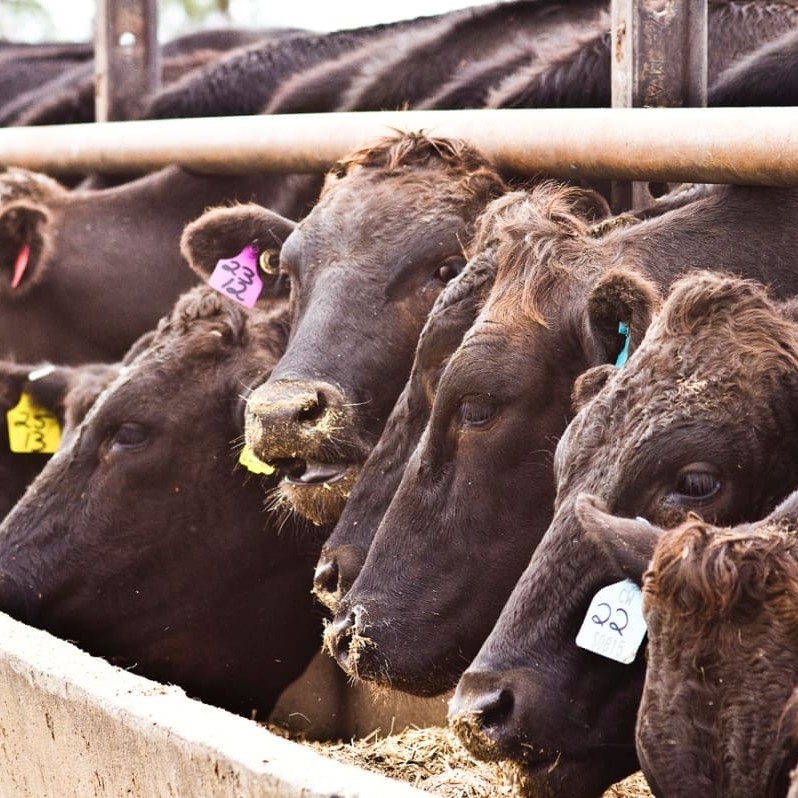 Rises in feedgrain prices have contributed to an easing in profitability on grainfed cattle, based on projections calculated in Beef Central’s latest trading budget performed yesterday.
Rises in feedgrain prices have contributed to an easing in profitability on grainfed cattle, based on projections calculated in Beef Central’s latest trading budget performed yesterday.
The bottom line is that profit projections on 100-day grainfed cattle have slipped back to breakeven, from an $11 profit on the same calculation carried out a fortnight ago.
The forecast is based on typical 100-day cattle entering the feedyard yesterday, and closing-out after 105 days on feed in mid-September (see Beef Central’s full criteria at bottom of page).
For Yesterday’s trading budget, we’ve stuck with a 190c/kg buy price, which has probably kicked a little on the back of recent rain through Queensland and NSW. There are no doubt some trades are being done at levels higher than that, but it’s hard to see that figure drifting much through June, depending somewhat on the impact of this weekend’s forecast rain.
There has to be cattle coming to market into July, but whether they are more slaughter than feeder types remains to be seen.
The Eastern Young Cattle Indicator this week seems to have levelled-off after earlier steep falls, finding stability around 364-366c/kg.
Pricing yesterday’s P&L budget feeder steer (flatback crossbred, ex-Darling Downs) at 190c values him at $855, a long way from our year-opening, January 9 steer value of $967.
Finished ration price applied in yesterday’s calculation was $250/tonne, up $10/t on the figure used a fortnight ago. While that is achievable currently on sorghum based ration, Beef Central believes that figure will move upwards to $260-$265/t in the short-term, due mainly to the white grain influence. Current feedgrain prices delivered Darling Downs indicate barley around $200/t and wheat about $10/t above that.
That produces a moderate increase in total feeding cost to $392, up from $376 last time. Similarly the ration price adjustment gives a total production cost yesterday calculated at $1340, an $18 rise on May 16’s figure, and only likely to rise further.
Applying these variables to the formula suggests a breakeven figure at 380c/kg dressed weight, up 5c from where we sat a fortnight ago.
That figure is in line with where the forward contract market for 100-day grainfeds sits with major processors (380c), delivering a ‘break-even’ proposition on yesterday’s exercise. Apply typical meatworks downgrades experienced on those sort of cattle, and the budget would again be in ‘red-ink’ territory, by anything up to $10-$15/head.
Looking back to our equivalent trading budgets from this time last year, interestingly, feeders were still worth 190c (before drifting over the following month down to 175c); ration price was $270/t, and the breakeven figure was 390c/kg, with forward prices around 380c. Currency this time last was around 107c.
Spot market profitability
Yesterday’s public processor grids for spot market 100-day grainfed ox among southeast Queensland plants were around 370c for milk and two-tooth cattle, depending on their positions with their contracted cattle. Cattle killed this week, going on feed back in mid-February and forward-bought by processors in the 370s, are currently line-ball in profit for processors with where the spot market is today.
That’s a lot better than early April when early January forward-bought cattle for slaughter cost around 400c/kg, meaning losses on those cattle to processors of about $105 a head.
Cost of gain, north Vs south
An avid Beef Central reader from southern Australia raised a good point this week, concerning cost of gain. Our current spreadsheet shows a cost of gain, in the southeast Queensland market, and using our chosen variables on 100-day cattle, in the mid-180s (c/kg, based on 210kg gain over 105 days, costing 391c). That COG figure, which has changed little for some time, is relatively line-ball with the cost of cattle, as they stand today.
Our southern lotfeeder reader points out that with lower grain cost currently evident in southern regions (possibly $20-$30/t less in places), the cost of gain figure in his region, on similar variables, is considerably less, at around 165-170c/kg. This represents a relatively attractive position for southern lotfeeders, as it rests well below feeder purchase price, despite paying slightly more for feeders than in the north.
It highlights the point that circumstances can vary a little from one lotfeeding region to another. Should Beef Central do a second breakeven, using a different set of variables for a district like southern NSW/northern Vic? It’s not a bad idea, and one that Beef Central will look into soon. In the meantime, the important point is that the general trends being captured in the existing SEQ calculation have relevance across all Eastern States.
- Beef Central's regular 100-day grainfed breakeven scenario is based on a representative standard set of production variables, ex Darling Downs. They include a 356kg dressed weight; ADG of 2kg; consumption 15kg and a NFE ratio of 7.5:1 (as fed); $25 freight; typical implant program; interest component. It is important to note that variations exist across production models (feed conversion, daily gain, mortality, morbidity, carcase specification); from feedlot to feedlot; and between mobs of cattle. For a more specific performance forecast on a given mob of cattle, consult with your preferred custom feeder.
